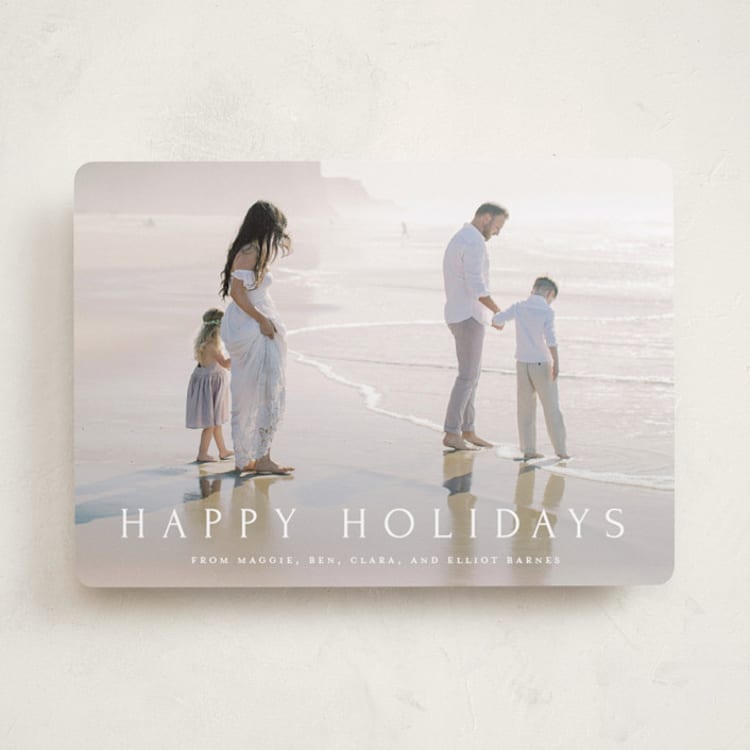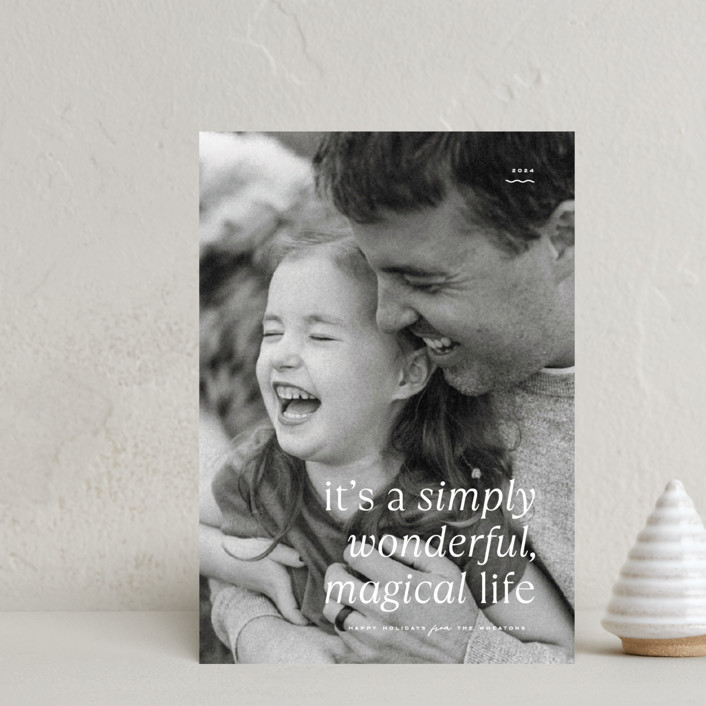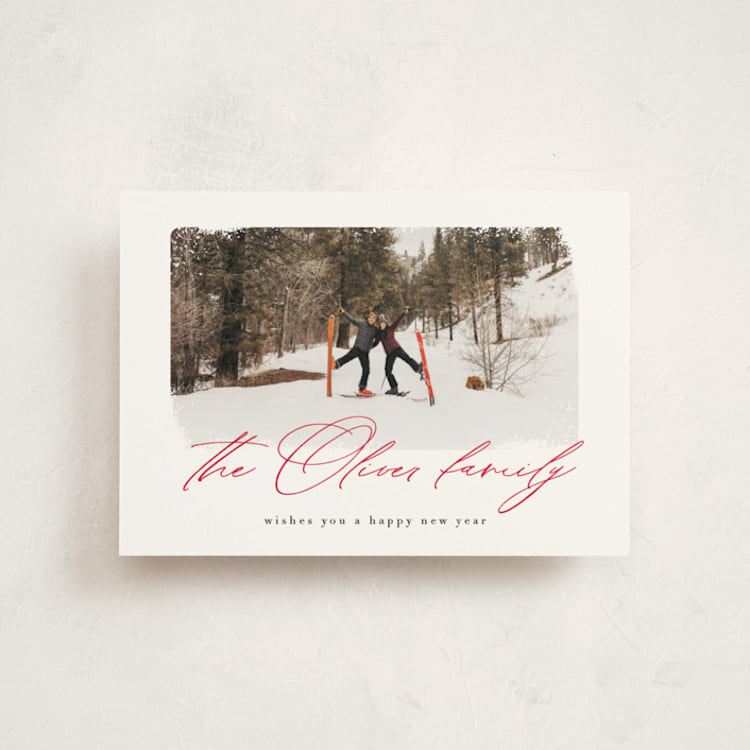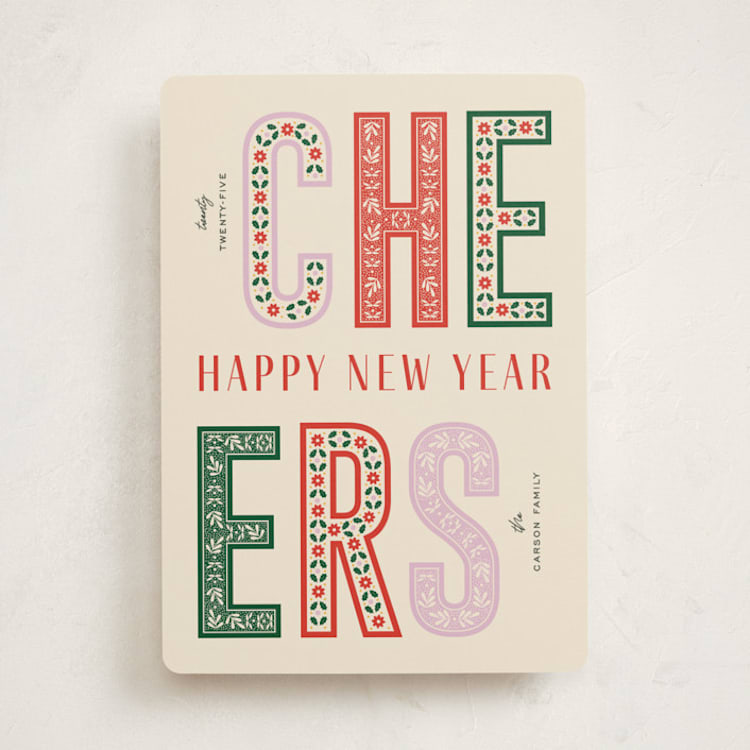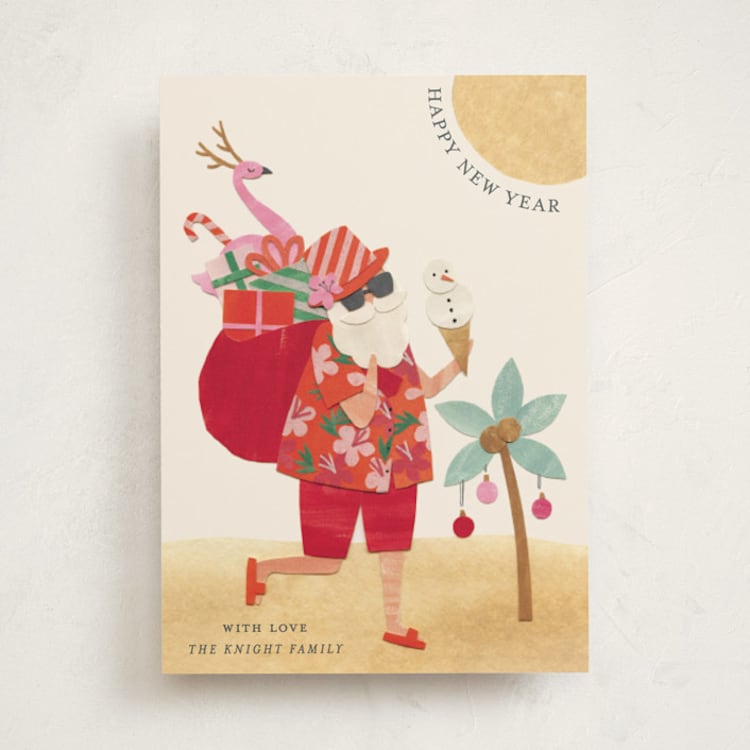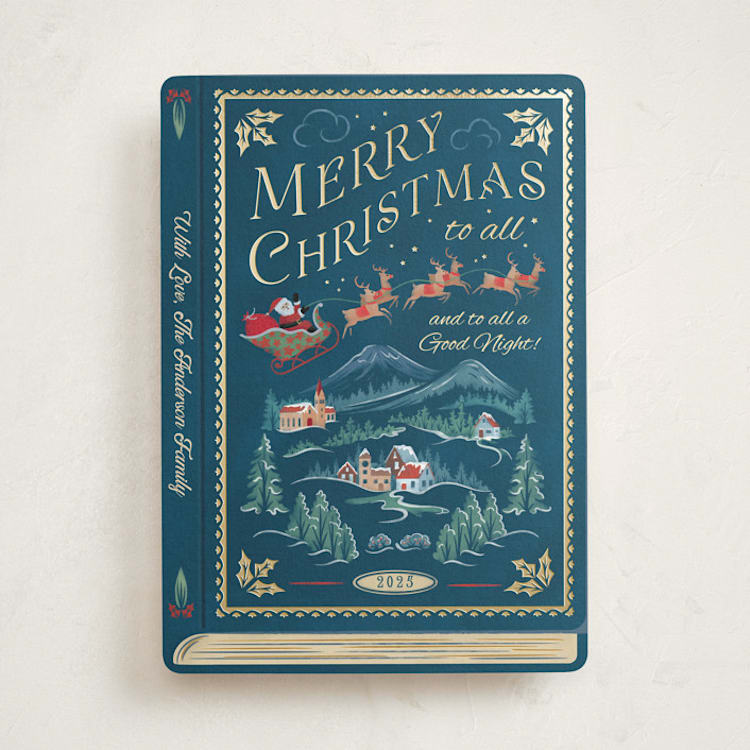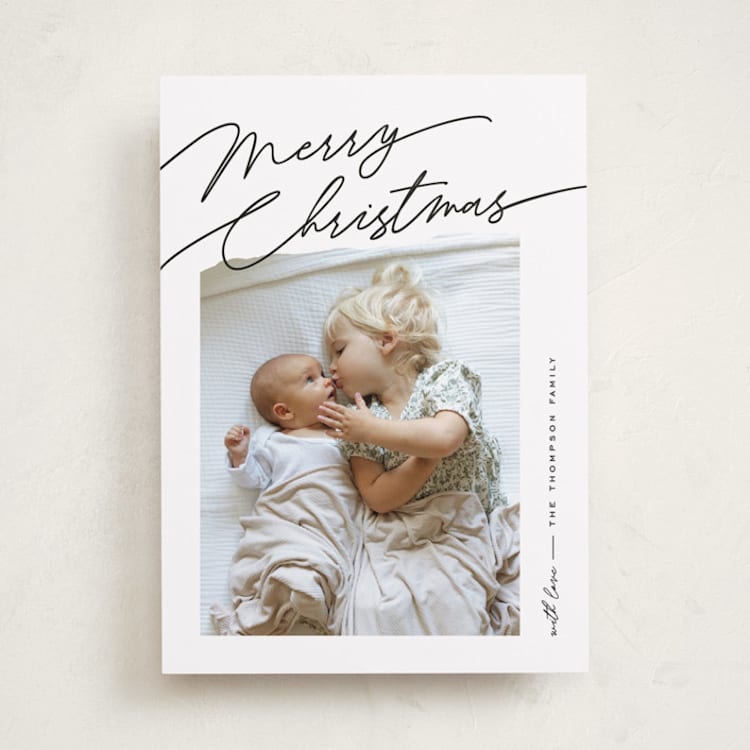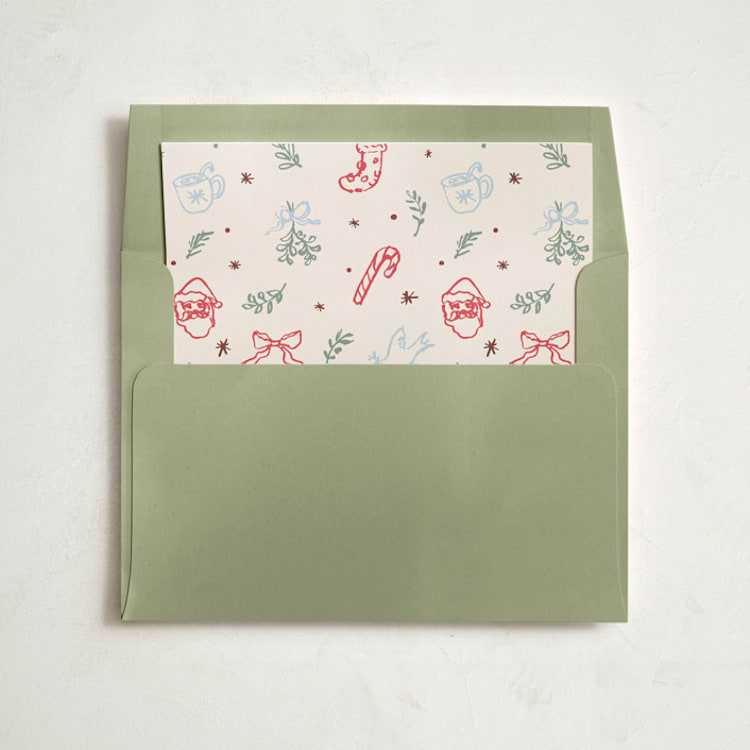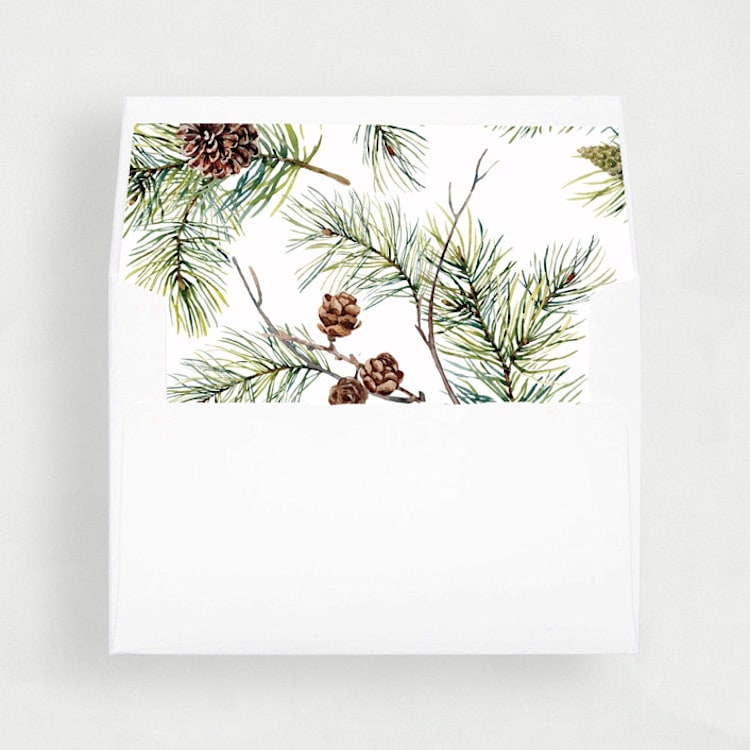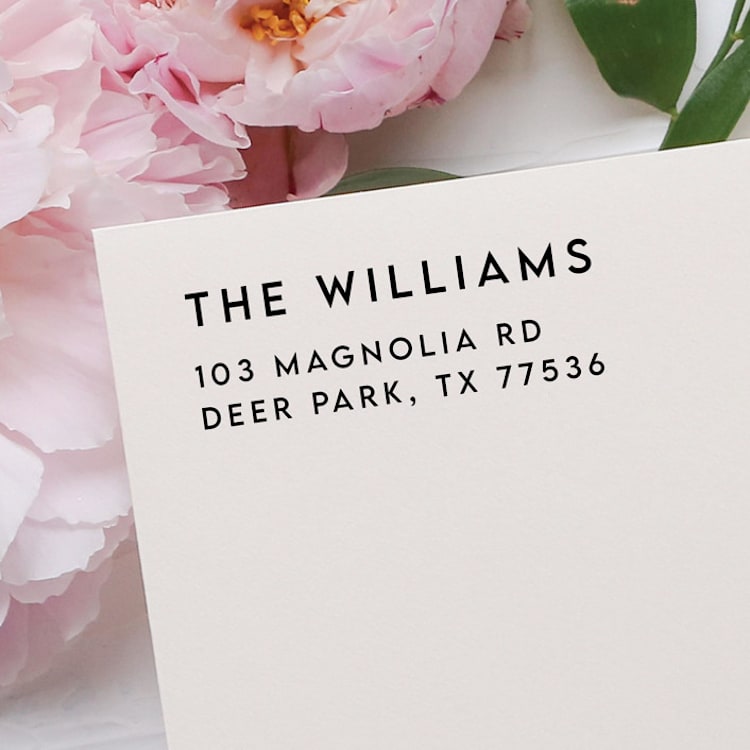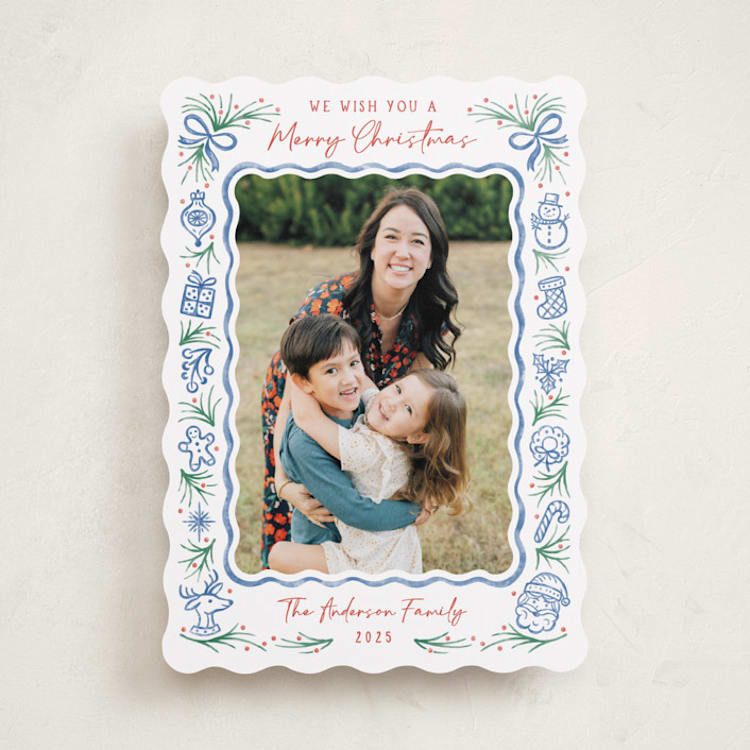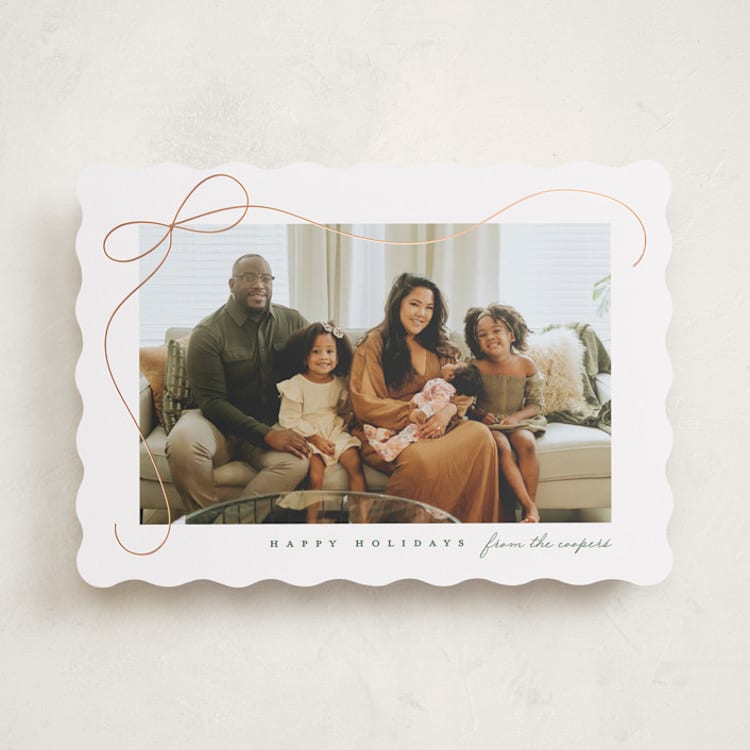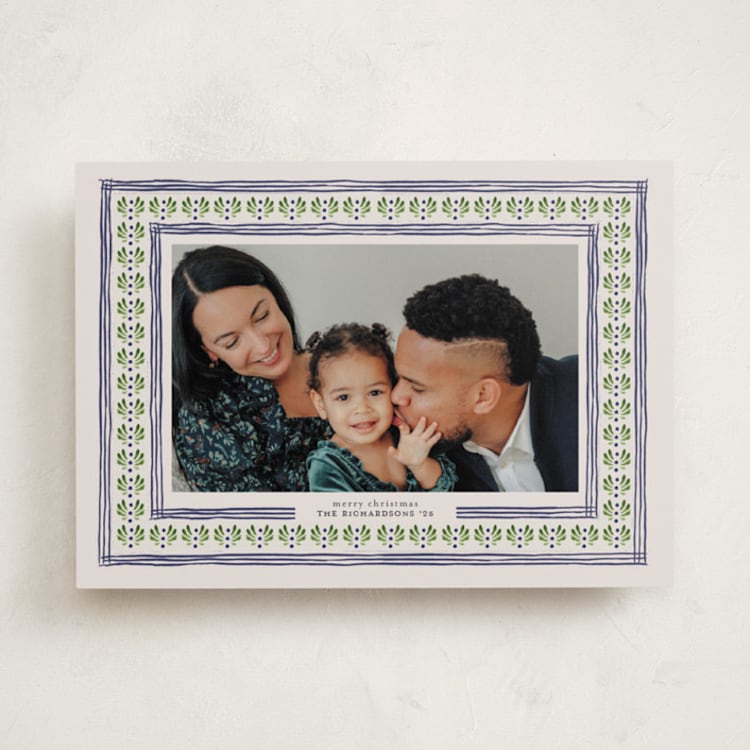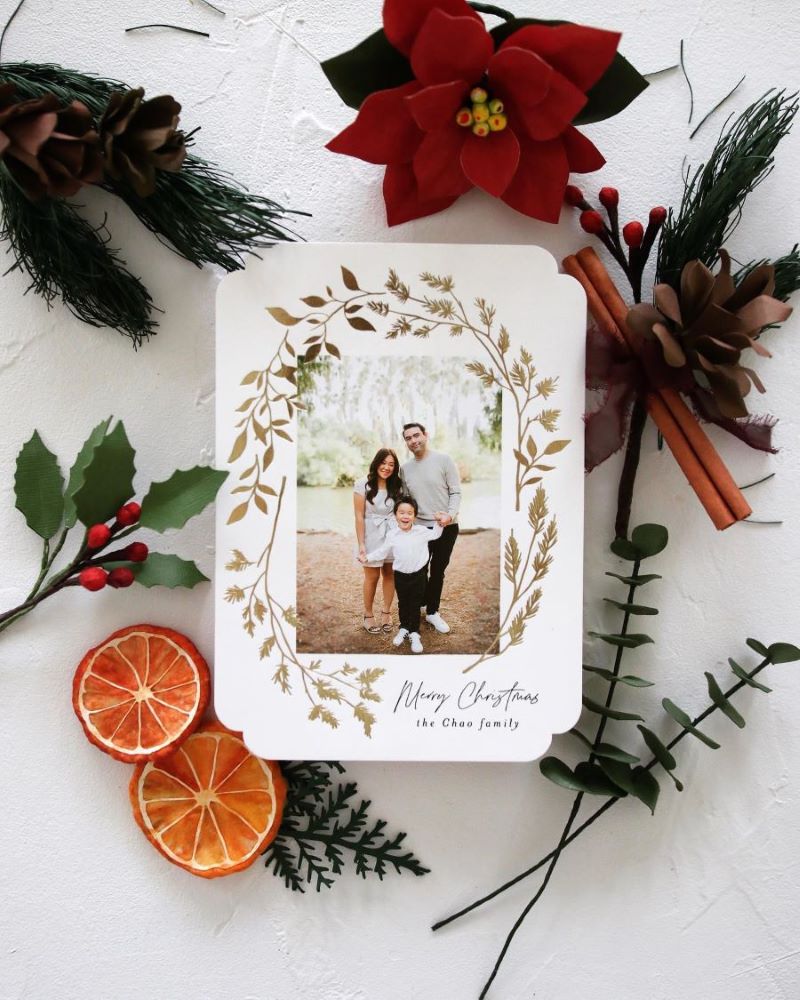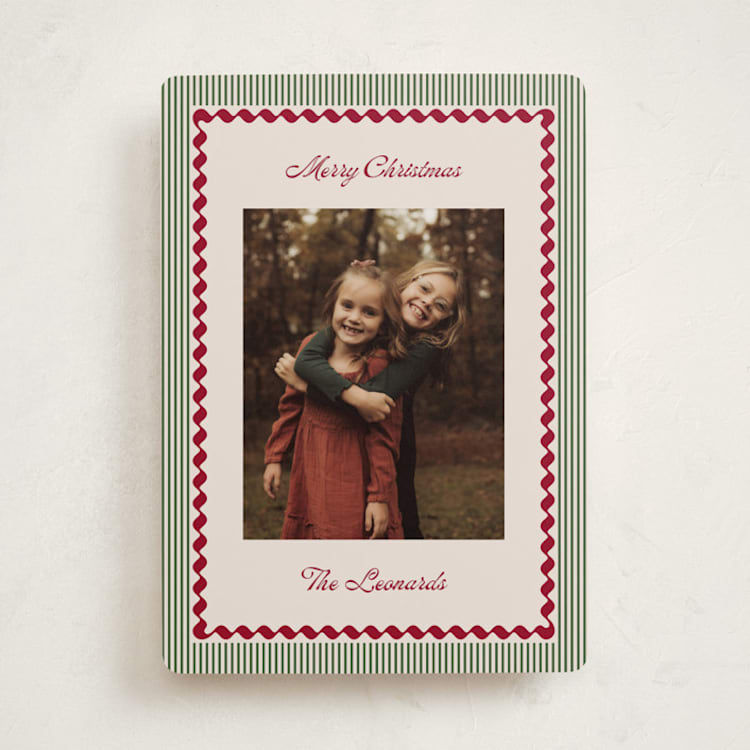Key takeaways:
- Knowing when to send Christmas Cards, who to include, and how to address different recipients properly sets you up for success.
- Sign every card by hand and choose inclusive language like "Happy Holidays" when sending to people with different religious backgrounds.
- Address envelopes correctly for different family situations and always include your return address so people can send cards back to you.
In an attempt to help your Christmas card sending run as smoothly as possible, we’ve put together this Christmas Card Etiquette Guide that answers all the most commonly asked questions surrounding holiday card planning, composing, and sending. To achieve a completely organized holiday season this year, we encourage you to also check out our detailed Christmas planning checklist.
WHEN SHOULD YOU SEND CHRISTMAS CARDS OUT?
It is the best Christmas card etiquette to have all your cards placed in the mail by the first week of December (or earlier). This will ensure that your recipients have at least two weeks to display their cards and appreciate them as they await the arrival of Christmas Day. Getting your cards out early also allows you the peace of mind to just sit back, relax, and enjoy reading all the cards that arrive in your own mailbox, rather than still focusing on sending yours out.
HOW LONG DO CARDS TAKE TO ARRIVE (DOMESTIC AND INTERNATIONAL)?
Standard ground shipping to a domestic address typically takes 6 to 9 business days. Of course, there are also other shipping options you could order such as Express, Two-Day, and Next-Day. International shipping on average will take between 7 and 21 business days. Keep in mind that the holiday season is when postage companies see their highest demand, so hitting the expected delivery date isn’t always an exact science. You should add on a day or two just to be safe.
HOW LATE IS TOO LATE TO SEND CHRISTMAS CARDS?
As a general answer, plan to get your cards in the mail no later than December 12 if you are selecting basic ground delivery. If you select Priority Mail or Rush Delivery, you should be able to get your envelopes in the mail by December 20 and expect them to arrive by Christmas.
Depending on which mailing service you select, USPS, FedEx, and UPS all have their own unique worst-case-scenario dates for getting your holiday cards in the mail on time. (And remember, these deadlines don’t account for when you want to get your holiday cards ordered! Minted offers a variety of last-minute shipping options if you’re running behind. Be sure to read through our accurate breakdown of Christmas delivery deadlines.)
If you feel you have missed the mailing window, you can always opt for a New Year’s card instead as a way of still maintaining holiday card etiquette.
WHAT ARE THE POST OFFICE WEIGHT REQUIREMENTS FOR MY HOLIDAY CARD?
If you are sending a holiday card in an envelope, a 1oz. First Class mailed letter is the standard postage limit. You can also use a Forever Stamp. Each additional ounce costs more, but at a reduced rate. If you are sending an envelope-free postcard, then postage will be even less. For a more in-depth and updated summary of pricing, weight, size and shape requirements, reference the USPS guidelines.
IS THERE A CERTAIN SIZE CHRISTMAS CARDS SHOULD BE?
Yes and no. Most recipients will want a card they can easily display on their mantel, kitchen table or refrigerator. An excessively large or small card may not end up on the mantle, thus missing out on the prolonged attention a more standard-sized card would receive. Common sizes include 4” x 6” (postcard/petite), 5” x 7” (standard), and 6” x 8” (grand). If curious about Minted’s offerings, learn more about our full list of Christmas card sizes and formats.
WHAT SHOULD I WRITE IN A CHRISTMAS CARD?
There are plenty of approaches to composing your season’s greetings. You can write a quick, hand-written note for each of your recipients (we recommend checking out our full list of Christmas sayings and greetings for some ideas if you’re going that route!) Or you could type out a year-in-review summary to include in their holiday mailer. If you like the idea of that larger family update, possible subjects to feature include:
- Stories from family life
- Update on children’s school grade and age
- New family activities
- Info on big purchases (house, car, home remodel)
- Update on the family pet (consider featuring your furry family members on pet-themed cards for an extra special touch)
- Interesting updates/projects at work
- Any medical updates
IS IT RUDE TO SEND THE SAME GENERIC MESSAGE TO EVERYONE?
Not at all! A printed, heartfelt message is perfectly acceptable and practical, especially for larger mailing lists, and many people prefer receiving a thoughtful printed message over no card at all. The key is ensuring the message feels genuine, warm, and appropriate for your diverse group of recipients. Reserve personalized handwritten notes for your closest friends and family members if you want to add extra touches, but don't feel obligated to write unique messages for every recipient. Most people understand the time constraints and will appreciate being included in your holiday greetings.
SHOULD I INCLUDE A PHOTO IF MY FAMILY HAS CHANGED SIGNIFICANTLY THIS YEAR?
Yes, authenticity is always appropriate and appreciated. Whether you've welcomed a new baby, experienced a loss, gone through a divorce, or had other major changes, your current family photo reflects your reality, and recipients typically appreciate genuine updates about your life. If you're hesitant, consider focusing on your immediate household as it exists now, using a holiday-themed card without photos, or including a brief acknowledgment of the changes in your message — most recipients will be understanding and supportive of your family's journey.
HOW TO SIGN YOUR CHRISTMAS CARDS
Traditional etiquette suggests that when a couple signs together, the woman's name typically goes first, followed by the man's name. For example: "Love, Sarah and John" or "The Smiths, Sarah & John." However, modern etiquette is more flexible, and many couples simply go with what feels natural or sounds better when spoken aloud.
For families with children, parents' names usually come first, followed by children's names in age order (oldest to youngest). For example: "Love, Mom, Dad, Emma, and Jake" or "The Johnson Family - Sarah, Mike, Emma & Jake."
The most important rule is consistency. Whatever order you choose, use it consistently across all your cards that year. If you're unsure, go with alphabetical order or simply what sounds most natural when you say the names together. Recipients care more about receiving your thoughtful greeting than the specific order of signatures.
HOW DO YOU SIGN A PLURAL FAMILY NAME ON YOUR CHRISTMAS CARD?
If you are signing a card for the whole family, do not use an apostrophe in your last name! For example, your signature should read “The Johnsons,” not “The Johnson’s”. In the rare instances where a family name ends with “ch”, “sh”, “s”, “x”, or “z”, then you should add an “es” to the end of the family name. For example, “The Davises.”
SHOULD YOU SIGN CARDS BY HAND?
Yes. Add a personal touch to each card by inking your own signature. If sending a greeting to a close family member or friend, try and get every member of your family to sign their name in their own handwriting. Your recipients will feel that much more touched by the correspondence and associate it as coming from your whole family. Consider encouraging your children to add a little holiday-themed doodle to their name as well!
HOW DO YOU SIGN OFF HOLIDAY CARDS?
While it’s important to sign your cards by hand, the way you craft that sign-off can make a big difference in how your recipients read the entire message. Here are a few suggestions for signing in a way that aligns with general holiday card etiquette:
- Professional colleagues: Keep it simple with “Best” or “Sincerely” and your name.
- Family members: Make it warm with “Love” or “Love always,” unless your extended family has its own traditional sign-off message.
- Close friends: Don’t be shy about using “Love” to sign off your friends' cards. If that feels like too much, try “Affectionately” or “Truly.”
- Distant relatives or acquaintances: Use any of the above sign-offs, gauging by each individual relationship. For example, you might use “Cheers!” for your elderly uncle with whom you spent many pleasant summers as a child, but “Sincerely” may feel more appropriate for your child’s teacher.
WHAT IS THE CORRECT WAY TO ADDRESS CHRISTMAS ENVELOPES?
There are several scenarios to keep in mind when addressing your Christmas cards.
- Married Couple or Family with the Same Last Name: It is common to use "The" followed by the family's last name. For example, "The Hendersons" or “The Henderson Family”. (Again, don’t use an apostrophe!)
- Married Couple with Different Last Names or Unmarried Couple that Lives Together: Use both their first and last names with an “and” or “&” separating the two names. For example: “Ms. Jane Swenson and Mr. Kyle Hodder.”
- Family with Different Last Names: Use both parents' first and last names, followed by the children's names on a separate line. For example, "Mrs. Jane Swenson and Mr. Kyle Hodder (followed on the next line:) Sarah, James, and Tyler." For a more casual approach, use both parents' last names separated by a slash. For example, “The Swenson/Hodder Family.”
- Single Recipient: Use their first and last name.
- For a Doctor: Include their first name and last name followed by “MD”. For example: “Sarah Jones, MD.”
DO YOU NEED TO INCLUDE YOUR RETURN ADDRESS ON THE ENVELOPE?
Yes! This allows the recipient to return a holiday greeting card to you in case they didn’t have your address on file. The return address also acts as a sneak preview of the contents of the envelope, building excitement.
WHO SHOULD I SEND CHRISTMAS CARDS TO?
We have a full, detailed post on who to send Christmas cards to, but here is a quick summary:
- Family (grandparents, aunts, uncles, cousins)
- Close friends
- Children’s friends
- Work colleagues (past and present)
- Service providers (doctors, dentists, coaches, teachers)
- Neighbors
- Members of clubs or organizations you belong to
- Emergency personnel/Military
- People who sent you a card last year
HOW MANY HOLIDAY CARDS DOES THE AVERAGE PERSON SEND?
Most people send between 50 and 100 cards, but it varies greatly from person to person. There are many things to consider, such as how many people are in your household, how many immediate family members you and your partner have, and what profession you are in. Because every household will have a different number of cards they wish to order, Minted allows customers to order as few as 25 and as many as 5000!
CAN I SEND CHRISTMAS CARDS TO PEOPLE WHO DON'T CELEBRATE CHRISTMAS?
Absolutely! Choose cards with inclusive messaging like "Season's Greetings," "Happy Holidays," or "Wishing You Joy" rather than specifically Christmas-themed language. Many people appreciate the thoughtful gesture regardless of their religious background, as these cards represent friendship, gratitude, and good wishes for the new year rather than a religious celebration. Focus on universal themes like gratitude, friendship, and well-wishes that transcend specific holiday observances.
WHAT'S THE ETIQUETTE FOR SENDING CARDS TO EX-SPOUSES OR FORMER IN-LAWS?
This depends entirely on your current relationship and any boundaries that have been established. If you maintain a friendly connection, especially when children are involved, sending cards can be a thoughtful gesture demonstrating maturity and goodwill. However, if the relationship ended poorly, legal boundaries exist, or either party has expressed discomfort with continued contact, it's better to respect those limits and focus your card-sending efforts on current relationships.
CAN I SEND HOLIDAY CARDS TO PEOPLE I ONLY KNOW THROUGH SOCIAL MEDIA?
Use your judgment based on the nature of your online relationship. If you've had meaningful interactions, share mutual friends, or have met in person through social connections, a card can be a lovely way to strengthen that relationship. However, avoid sending cards to casual acquaintances or people you barely interact with, as this might feel presumptuous or awkward. Consider whether you'd feel comfortable receiving a card from them, and let that guide your decision.
WHAT IF I RECEIVE A CARD FROM SOMEONE NOT ON MY LIST?
Don't feel obligated to reciprocate immediately with a card this year, but consider adding them to next year's list if you value the relationship. A simple thank-you text, email, or phone call acknowledging their thoughtfulness is appropriate and shows you appreciate the gesture. If you want to respond this year, a New Year's card or a heartfelt note in January works well and doesn't feel rushed or obligatory.
SHOULD I CONTINUE SENDING CARDS TO PEOPLE WHO NEVER RESPOND?
Evaluate each relationship individually. If someone consistently doesn't reciprocate over several years and you have minimal other contact, it's perfectly acceptable to remove them from your list and redirect your efforts toward more engaged relationships. However, remember that some people genuinely appreciate receiving cards even if they don't send their own due to time, budget, or personal constraints, so consider the overall relationship and whether you enjoy the act of sending regardless of reciprocation.
IS IT RUDE NOT TO SEND CHRISTMAS CARDS?
Not at all — sending Christmas cards is a lovely tradition, but it's entirely optional, and not sending them doesn't violate any etiquette rules. Many people choose not to send cards due to time constraints, budget considerations, religious preferences, or simply personal choice, and this is perfectly acceptable. If you're concerned about maintaining relationships, remember that there are many other ways to stay connected with friends and family throughout the year, and most people understand that card-sending isn't feasible for everyone.
OTHER CHRISTMAS CARD ETIQUETTE TIPS
These last few points have been dancing around the same issue: holiday card etiquette. Knowing the ins and outs of polite behavior is not quite the lost art some believe it to be! Here are a few final tips from the Minted team for maintaining politeness while sending holiday greetings:
- Separate professional greetings from personal ones: Any holiday cards going to business contacts, colleagues or clients should include neutral, non-religious wording and avoid emotional words like “love.”
- Keep a running card list from year to year: As you put away cards you’ve received, note the senders as a way of updating your list for the following year.
- Edit your card list from time to time: You can send a card to anyone, but you are not required to send them to everyone you know. It’s okay to remove people from your list if you’ve fallen out of touch or no longer have their current address.
- Paper cards vs. digital cards: With so much communication being conducted online nowadays, it may seem natural to send digital Christmas cards. But remember how nice it is to have those hard-copy cards to display on the mantle or tape on your home’s door! Online greetings skew more casual, so they may be perfectly appropriate for some of your far-flung and computer-savvy friends. Older relatives and close friends, however, will appreciate the extra effort of writing and mailing old-fashioned holiday cards.
- Place cards face up in envelopes: When stuffing your holiday card envelopes, the front of your Christmas card should face the side of the envelope that has the seal or opening. This way, when your recipient opens your envelope, they’ll be able to immediately see the front of your card. If sending a fold-over card, be sure to place the fold of the card at the bottom of the envelope. This will ensure the card’s orientation will open like a book when the envelope seal is broken. This same etiquette can be applied to birthday cards, birth announcements and the like.
- Always include your return address: Be sure to address your recipients correctly. Read on for more specific holiday card etiquette on these two points!
WHAT SHOULD I DO IF MY CARDS ARRIVE DAMAGED?
If your printed cards arrive with defects, smudging, or damage, don't panic. Most reputable card companies offer quality guarantees. Contact customer service immediately with photos of the damaged items. Keep these tips in mind:
- Document everything: Take clear photos of damaged cards before handling them extensively.
- Check your timeline: If you're close to your mailing deadline, ask about expedited replacement options.
- Order extras: For future orders, consider ordering 10-15% more cards than needed as a buffer.
HOW DO I HANDLE RETURNED MAIL?
When cards come back marked "Return to Sender," here's what you can do:
- Address updates: Use social media, mutual friends, or online directories to find current addresses.
- Send digitally: If time is running out, send a heartfelt digital greeting acknowledging the postal delay.
- Update your records: Make notes in your mailing list to verify addresses before next year's cards.
- Consider the relationship: If someone has moved without sharing their new address, evaluate whether to continue including them on your list.
HOW DO I MANAGE RELIGIOUS SENSITIVITY?
Navigate religious differences thoughtfully with these approaches:
- When in doubt, go neutral: Choose cards with secular messages like "Season's Greetings" or "Happy Holidays".
- Know your audience: Keep mental notes of recipients' religious preferences from previous conversations.
- Separate your lists: Consider ordering two card designs – religious cards for those who share your faith, and happy holidays cards for everyone else.
- Respect boundaries: If someone has expressed discomfort with religious imagery in the past, honor their preferences.
HOW DO I ADDRESS FAMILY CHANGES IN MY CARD LIST?
Life changes require thoughtful adjustments to your card approach:
New Babies:
- Update your address book with new family member names.
- Consider sending a congratulatory note along with your holiday card.
- Ask parents how they prefer the baby's name to be included on the envelope.
Deaths in the Family:
- Remove the deceased person's name from your mailing list.
- Consider addressing cards to "The [Family Name] Family" rather than individual names.
- Include a brief, heartfelt acknowledgment in your message if appropriate.
- Don't avoid sending a card – your thoughtfulness during difficult times is often deeply appreciated.
Divorces:
- Send separate cards to each former spouse if you maintain relationships with both.
- Update addresses and remove joint names from your mailing list.
- When addressing cards to single parents, use their preferred name format.
- Avoid mentioning the divorce unless they've specifically shared the news with you.
HOW CAN I MAKE MY CARDS CONSIDERATE FOR ALL RECIPIENTS?
Part of good holiday card etiquette is ensuring your message can be enjoyed by everyone on your list. Here are thoughtful ways to make your cards accessible:
Visual Considerations:
- Choose high-contrast colors and readable fonts for elderly recipients or those with vision challenges.
- Avoid overly decorative scripts that may be difficult to read.
- Consider slightly larger font sizes for your main message.
- Ensure important information isn't printed in very light colors.
Inclusive Design Choices:
- Select card designs that aren't overly busy or cluttered.
- Use clear, simple language in your messages.
- Consider the physical cardstock. Some recipients may have difficulty handling very thin or glossy materials.
- If including small photos, make sure faces are clearly visible.
Thoughtful Extras:
- For recipients with significant vision impairments, consider including a phone call to share your holiday message personally.
- Large-print address labels can be easier for elderly family members to read.
STILL HAVE QUESTIONS? REFERENCE OUR CHRISTMAS PLANNING HUB!
Did you find our Christmas Card Etiquette Guide helpful? If so, we have plenty more articles surrounding holiday planning you might find equally insightful. Learn about unique holiday party themes, outfits to wear for your family photo shoot, and even ways to creatively display all the seasonal cards you receive.




